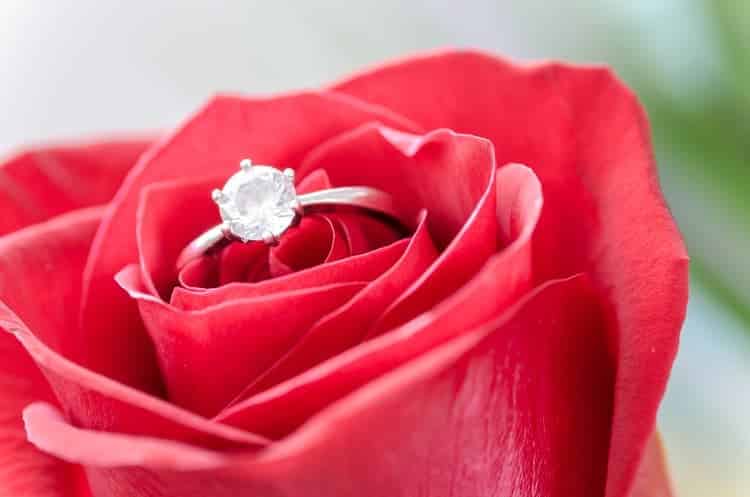Before you begin your search for a new diamond engagement ring, you’ll want to familiarize yourself with some of the basics. And so, for a straightforward guide on what to look out for and what questions to ask at the jewelers, be mindful of the following universal grading system created by GIA (Gemological Institute of America). The four C’s; cut, clarity, color, and carat shall help you to size up a diamond and decide if it’s right for you.
Cut
Arguably, one of the most critical aspects of diamonds is the cut of the rock. This does not concern the shape of the diamond, such as pear, round or emerald. It does, however, concern the sparkle and shine that the facets of the diamond elicit when interacting with the light. Because of this, the proportions and symmetry of the diamond are crucial to consider. Equal parts of dark and light spots should be present for a radiant jewel. The cut of the ring is graded subjectively by a trained professional.
Clarity
Due to the process diamonds endure during their creation, they are exposed to pressure and heat that can tarnish the purity (or rather add to the uniqueness) of the diamond. These impurities are measured via clarity grading which you can read more about at www.pricescope.com/wiki/diamonds/diamond-clarity. The clarity grading is nothing to worry about, as it’s what makes each diamond different. The clarity grades start with the most superior clarity gradings beginning with; FL (flawless), IF (internally flawless), and VVS (Very very slightly).
Color
The most prestigious diamond in terms of color is an entirely colorless gem. Colorless diamonds are both rare to find and in high demand, thus the price reflects this. GIA has developed a color grading system for diamonds ranging from D to Z – D is for an excellent colorless diamond. The grading system does not identify specific colors, it refers to the intensity and presence of color, and as with the cut, the grading is subjectively decided by a trained professional. Do bear in mind while shopping that color to the untrained eye is hard to distinguish unless you are holding the diamonds up towards each other from polar opposite sides of the grading spectrum.
Carat
One of the four C’s that most people are familiar with is carat. Although this shouldn’t be confused with karat, as this concerns gold, not diamonds. In comparison to the other C’s, carat is the only one of the four C’s that can be determined accurately as it measures the size of the diamond. Larger diamonds are often deemed more popular than smaller diamonds. Because of this, you can expect the value to be higher. While shopping for diamond jewelry, attempt to purchase a diamond with a holistic set of qualities from the four C’s. For example, initially, you may be attracted to a large carat diamond, however, if it’s graded Z for color, and an IF clarity rating, it could mean you are buying a cloudy yellow diamond at a premium price.
With this knowledge of the basics of diamonds, you can define what and why particular diamonds are more sought-after and valuable than others.

